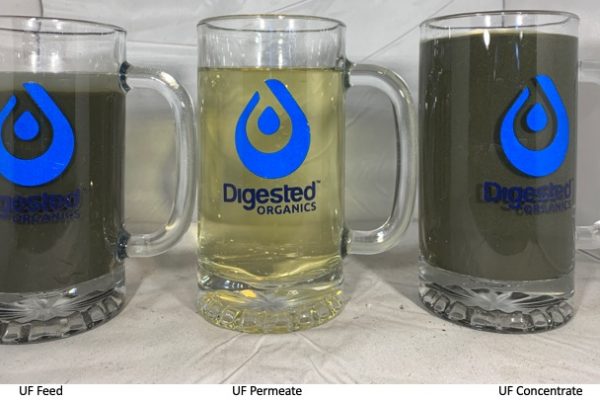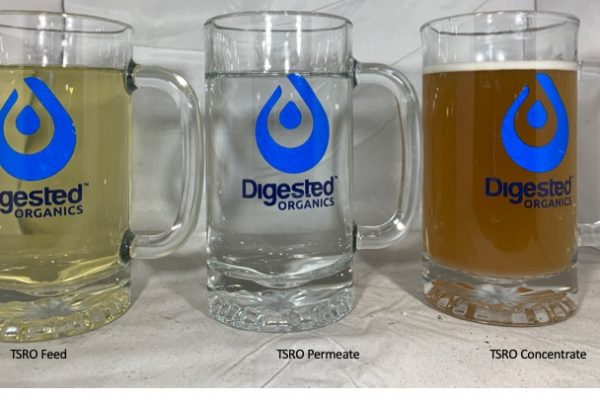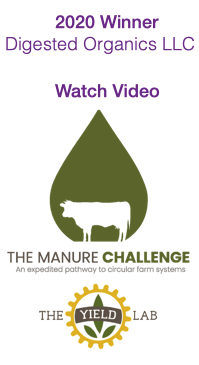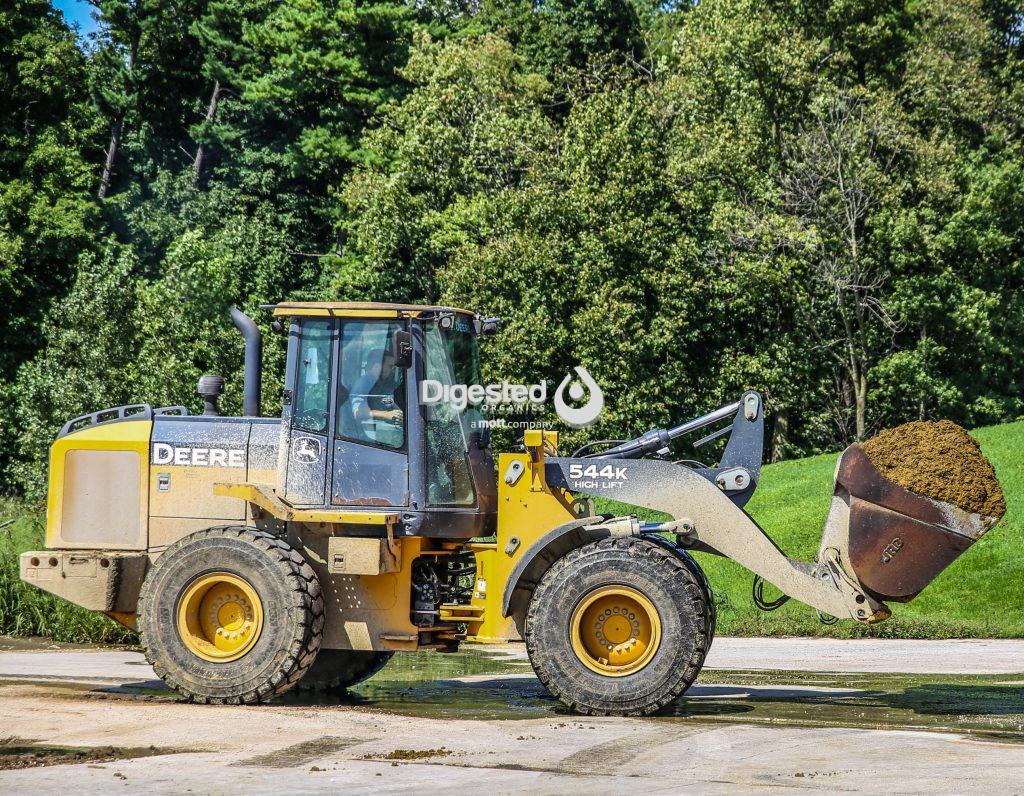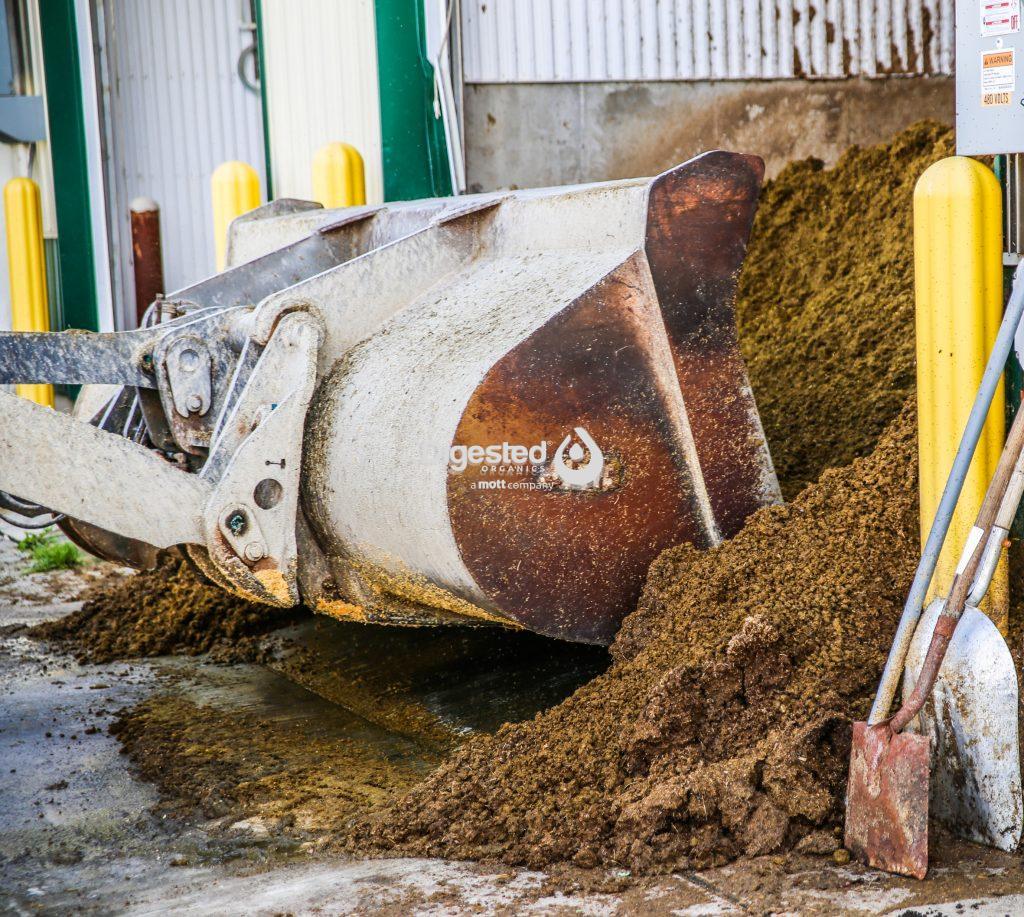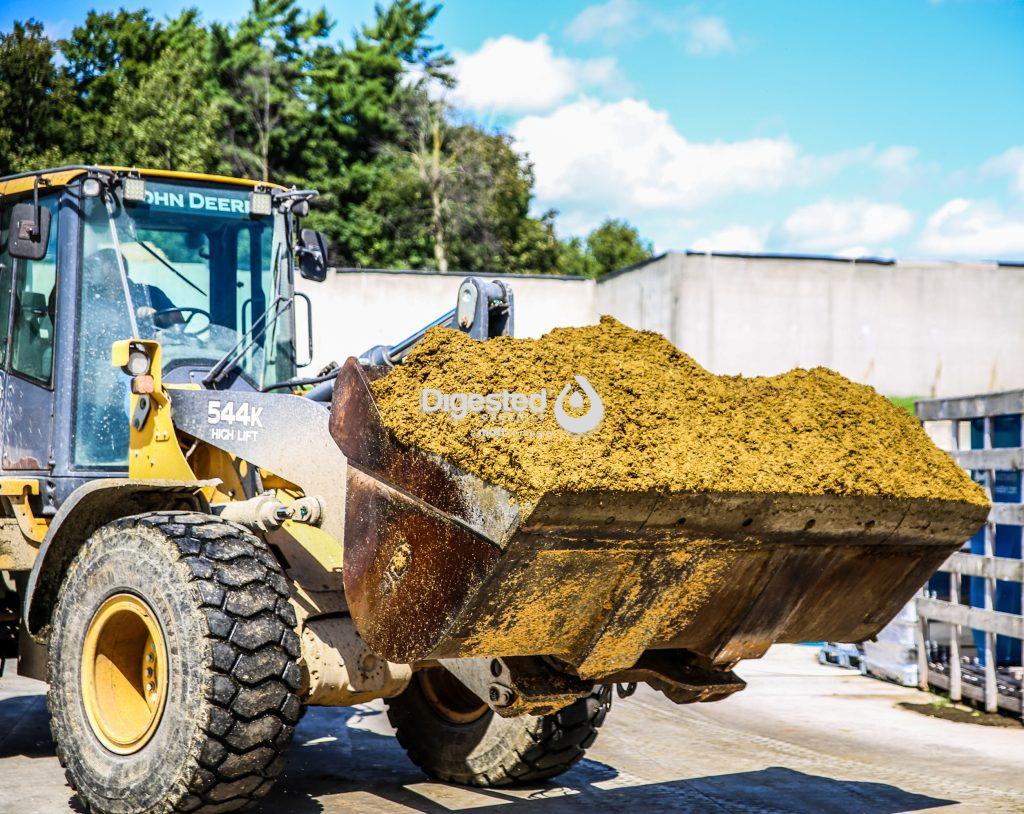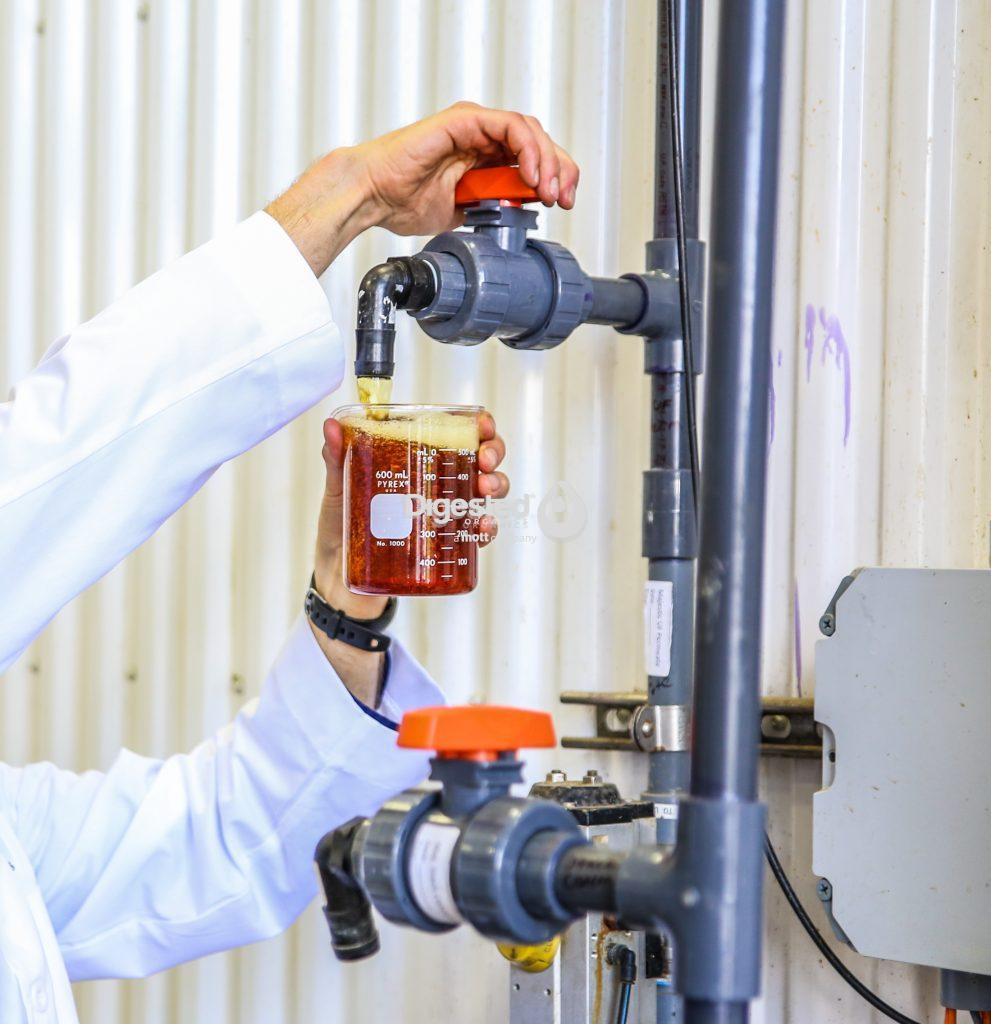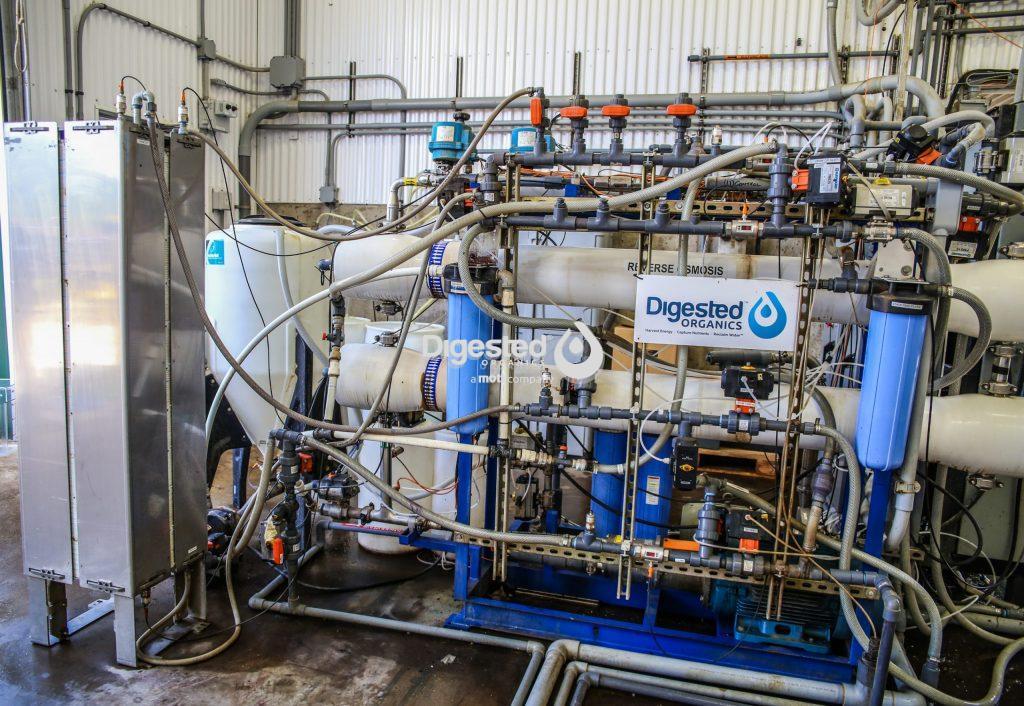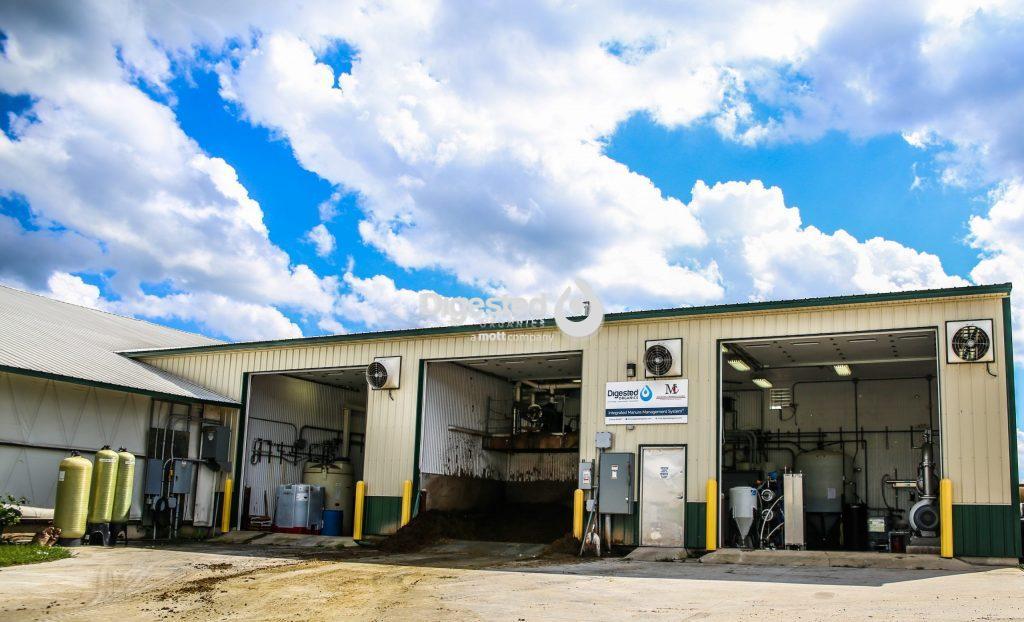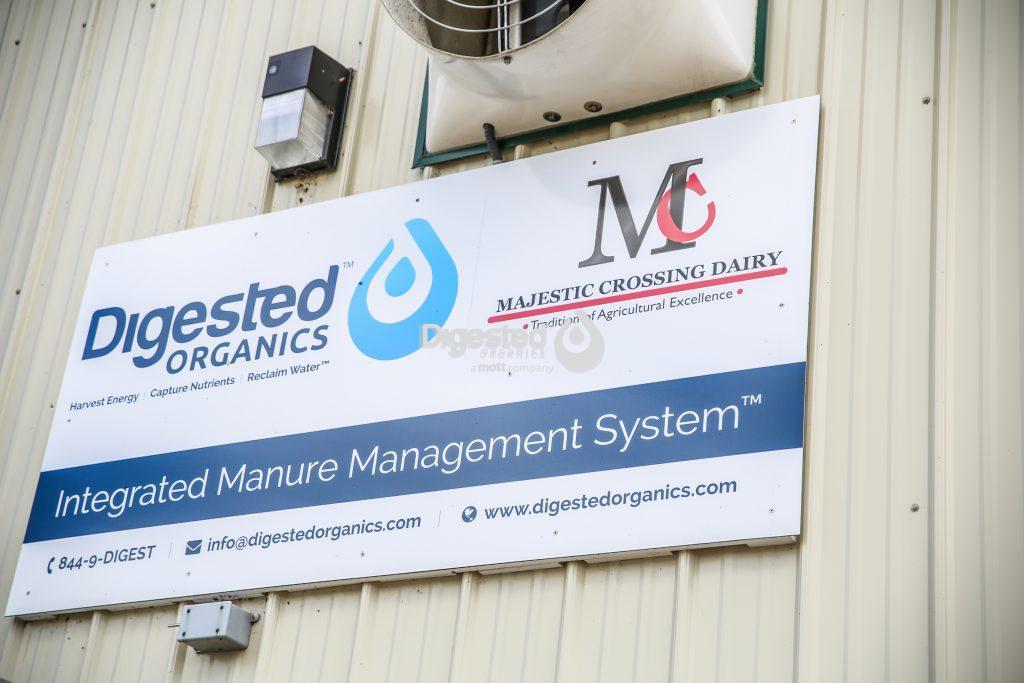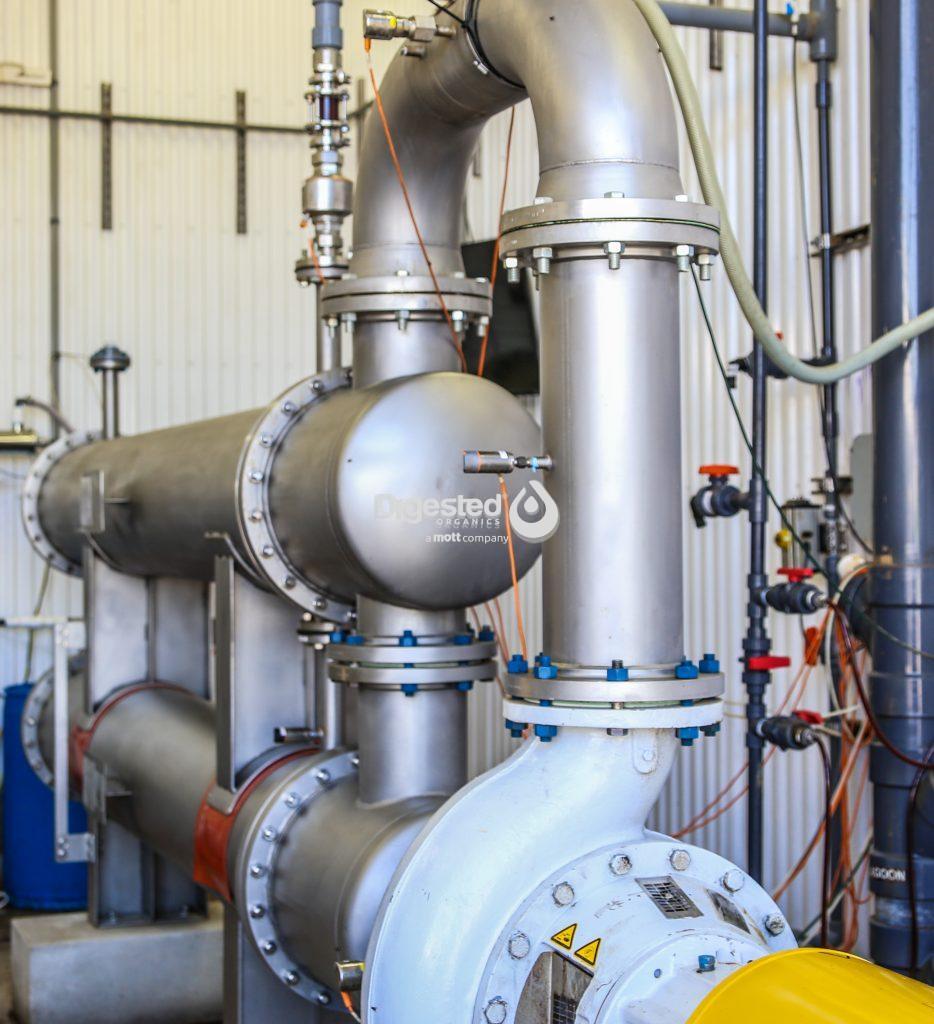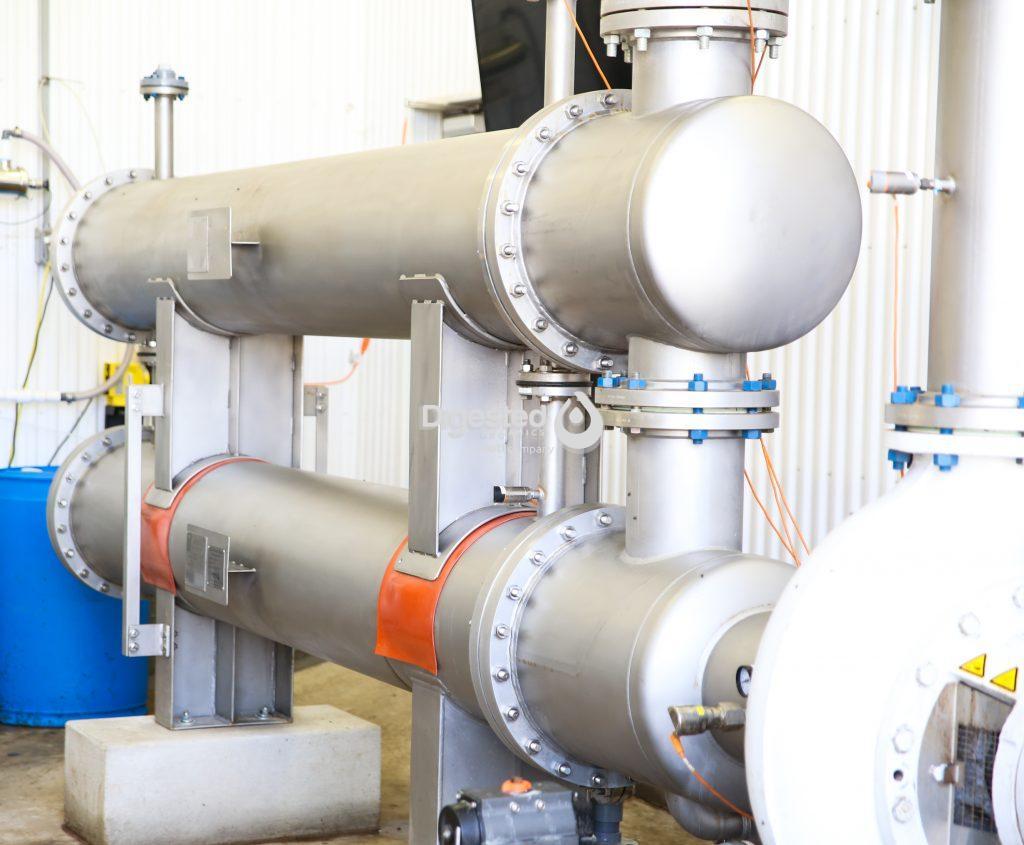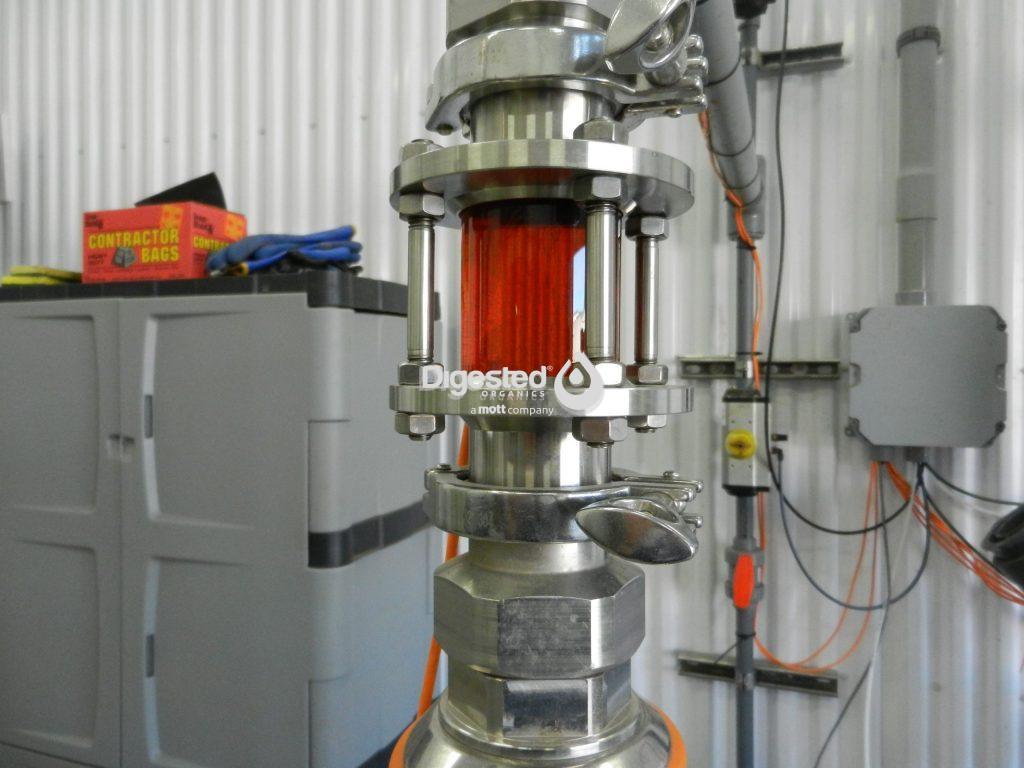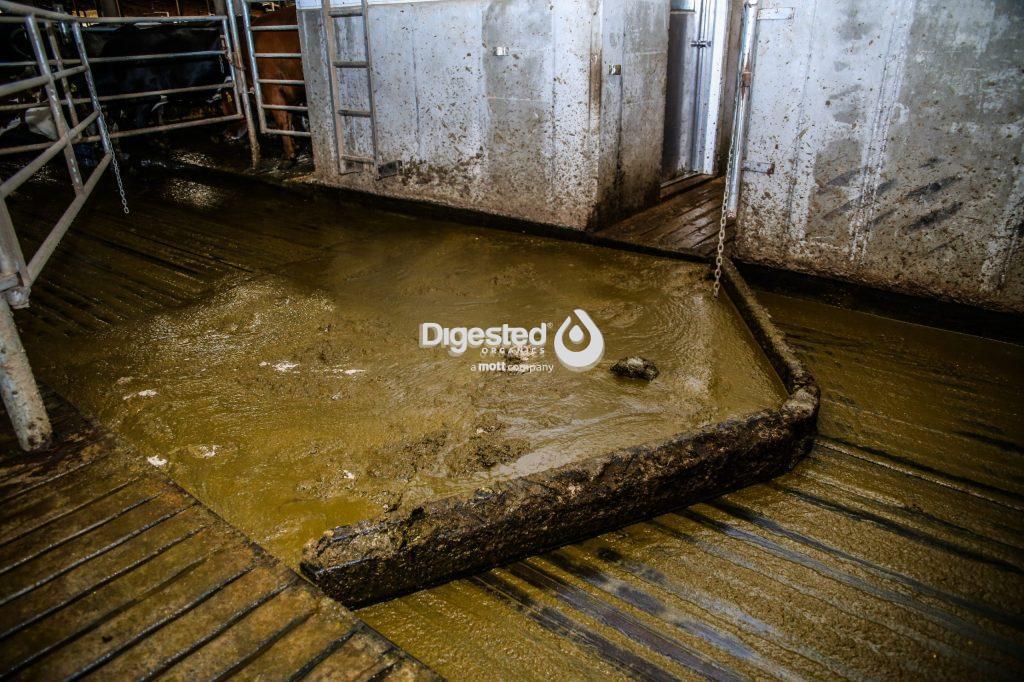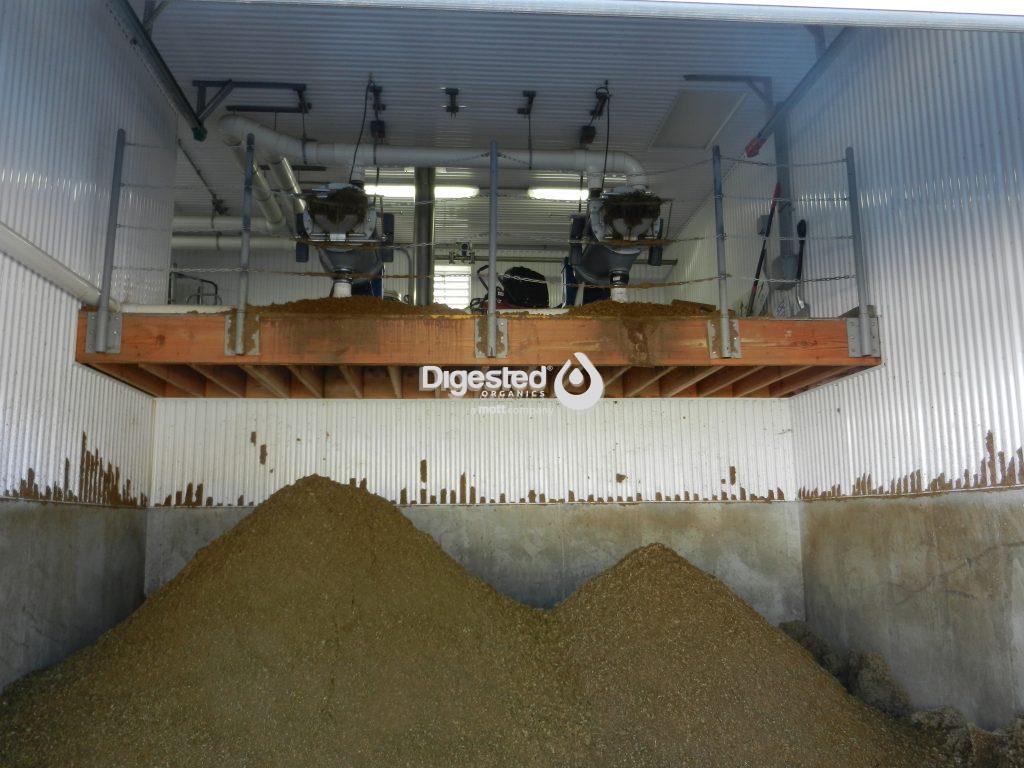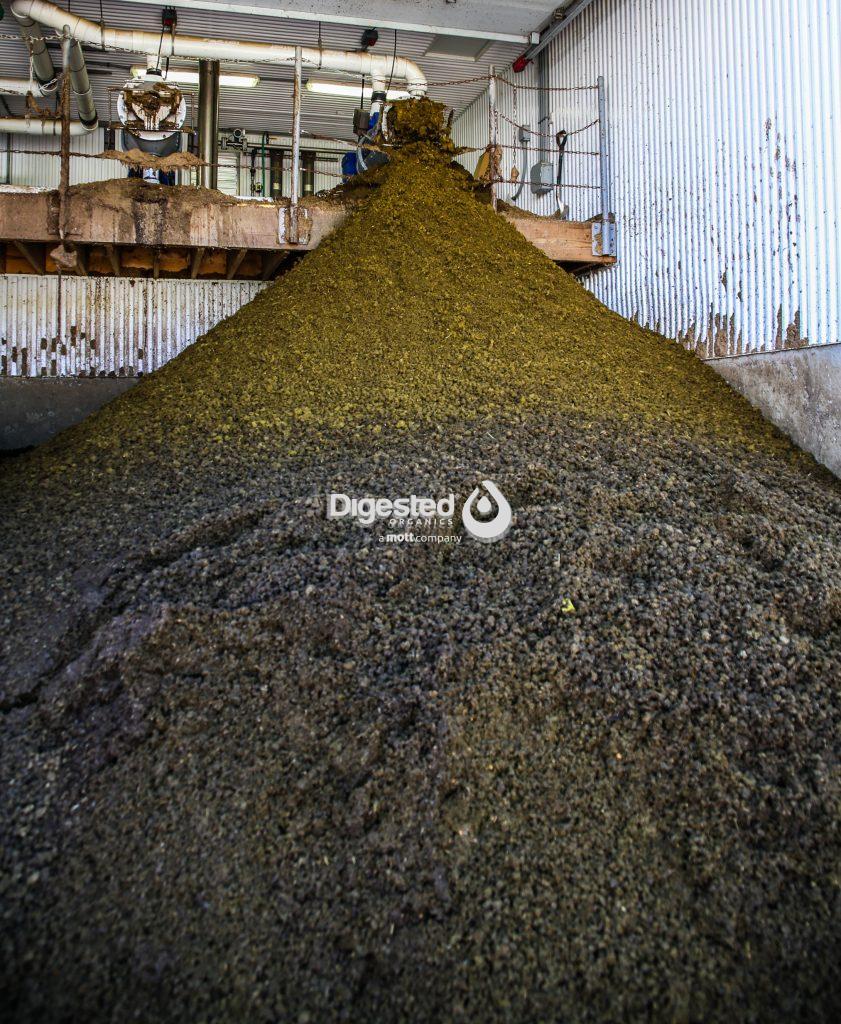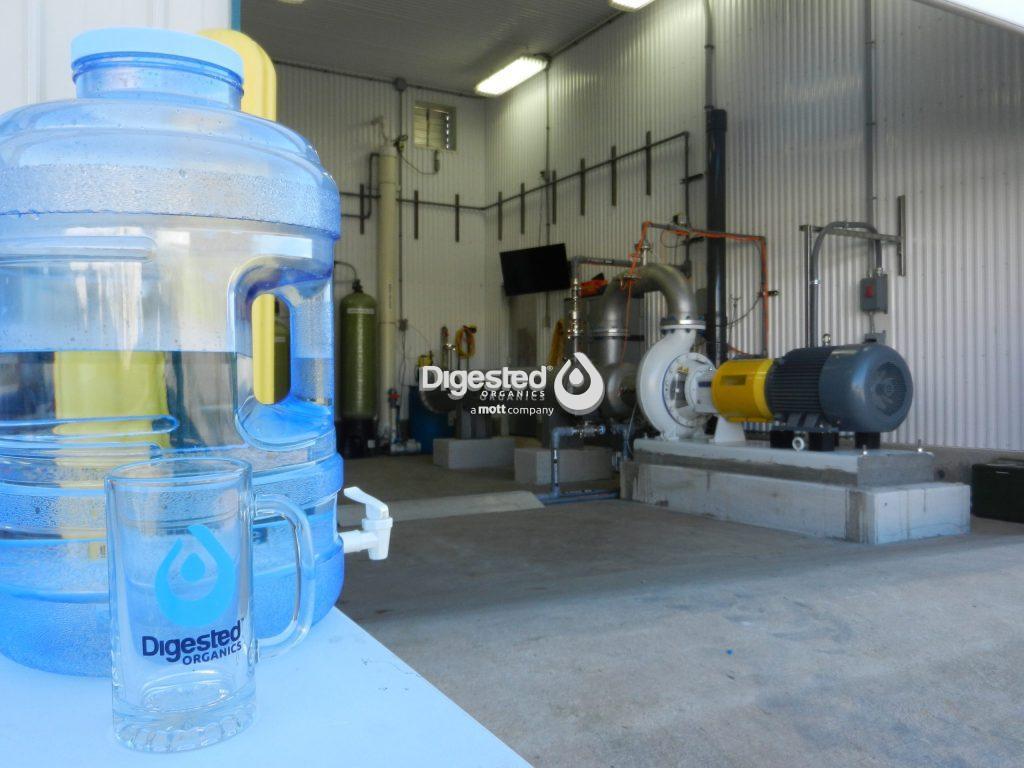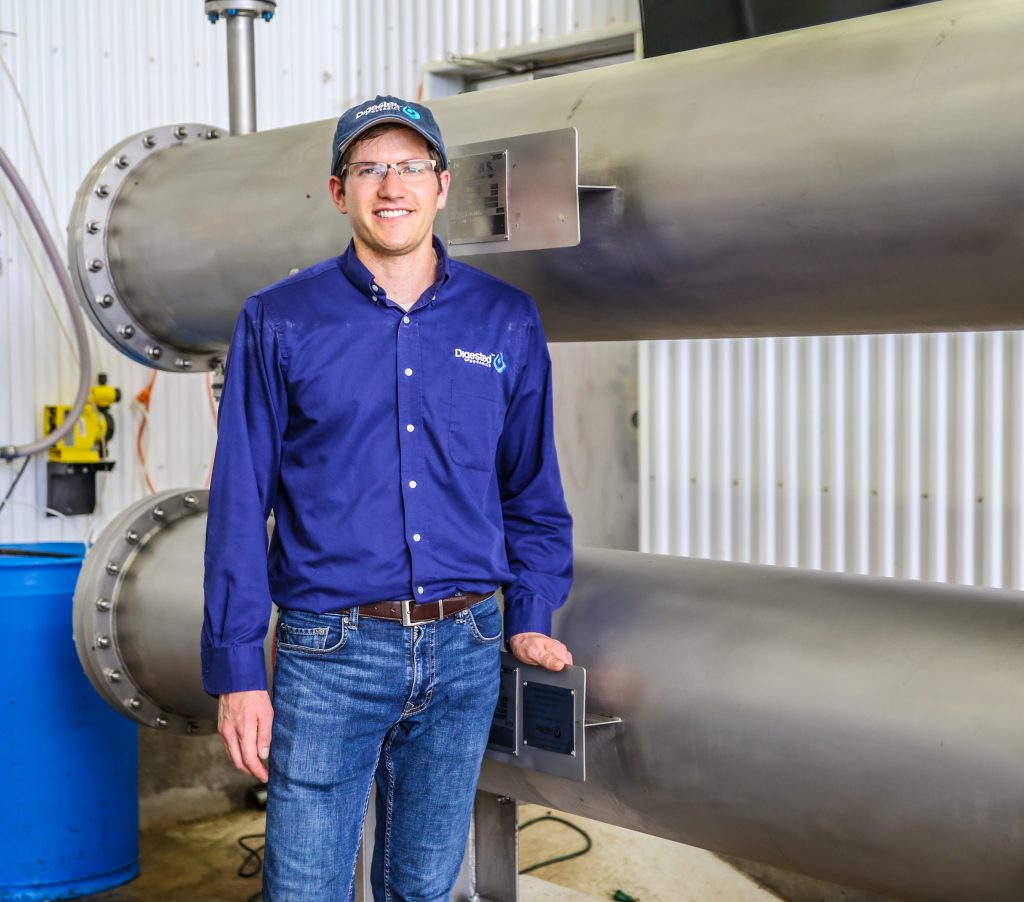Food Waste Digestate Treatment
For Food Waste Digester Facility
Client Overview
- Industry: Food Waste Digester Facility
- Location: Michigan
- Year: 2020
- Facility Capacity: 100,000 GPD
Challenge
Our client, a Michigan-based Food Waste Digester facility, faced significant challenges with their digestate management:
Solution: Multi-Stage Filtration System
We implemented a three-stage filtration system to address these challenges:
- SWECO Vibratory Screen: For initial removal of large abrasive solids and fibers
- Ultrafiltration (UF): A unique polymer-free system for advanced filtration
- Two-Stage Reverse Osmosis™ (TSRO): For final purification of UF permeate
Project Approach
- Site Assessment:
- Processed raw digestate through an 18″ diameter vibratory screen (447 microns, 37.9% open area)
- Filtered screened digestate through our proprietary UF system
- Further purified UF permeate using TSRO system
- System Specifications:
- UF membrane average pore size: 0.02 μm
- UF system: Stainless-steel modules with multiple porous tubular membranes
Results
Performance Analysis
Ultrafiltration (UF) Performance:
- Total solids removal: Vast majority
- Organic nitrogen removal: Significant
- Phosphorus removal: Significant
- COD reduction: 95%
- BOD reduction: >78%
Analysis of Ultrafiltration Process Streams
| PARAMETER | Unit | UF Feed | UF Permeate | UF Concentrate | Percent Removed by UF |
|---|---|---|---|---|---|
| Total Solids | mg/L | 15,900 | 5,700 | 52,604 | 64% |
| Biochemical oxygen demand (BOD) | mg/L | 673 | <149.2 | NA | >78% |
| Chemical oxygen demand (COD) | mg/L | 16,460 | 800 | 41,900 | 95% |
| Ammoniacal Nitrogen | mg/L | 1,020 | 971 | 1,210 | 5% |
| Organic Nitrogen | mg/L | 650 | 39 | 3,439 | 94% |
| Total Kjeldahl nitrogen (TKN) | mg/L | 1,670 | 1,010 | 4,661 | 40% |
| Phosphorus | mg/L | 281 | 12.2 | 1,500 | 96% |
| Potassium | mg/L | 1,010 | 953 | 1,300 | 6% |
| Sulfur | mg/L | 84 | 25.2 | 407 | 70% |
| Calcium | mg/L | 441 | 141 | 1,821 | 68% |
| Magnesium | mg/L | 75 | 52.6 | 203 | 30% |
| Sodium | mg/L | 1,130 | 1,120 | 1,318 | 1% |
| Iron | mg/L | 33.2 | 0.23 | 196 | 99% |
| Manganese | mg/L | 0.793 | 0.071 | 4 | 91% |
| Zinc | mg/L | 1.66 | n.d. | 9 | 100% |
| Copper | mg/L | 0.42 | n.d. | 2 | 100% |
| Conductivity | ms/cm | 14.1 | 13.9 | NA | n/a |
| pH | S.U. | 7.87 | 8.04 | 8 | n/a |
n/a: not applicable; n.d.: not detected , NA: not analyzed
As expected, the UF removed the vast majority of the total solids, organic nitrogen, and phosphorus from the digested food waste sample, producing a transparent permeate. The COD reduction was 95% and the BOD reduction was greater than 78%.
Two-Stage Reverse Osmosis™ (TSRO) Performance:
- Produced very clean water with low levels of N, P, and K
- Ammonia in RO permeate: 10.1 mg/L
- Total nitrogen in RO permeate: 17.2 mg/L
Analysis of Two-Step Reverse Osmosis Process Streams
| PARAMETER | Unit | TSRO Feed | TSRO Permeate | TSRO Concentrate | Percent Removed by TSRO |
|---|---|---|---|---|---|
| Total Solids | mg/L | 5,700 | 200 | 28,100 | 96% |
| Chemical oxygen demand (COD) | mg/L | 800 | 22 | 5,400 | 97% |
| Ammoniacal Nitrogen | mg/L | 971 | 10.5 | 1,170 | 99% |
| Organic Nitrogen | mg/L | 39 | 0.2 | 60 | 99% |
| Total Kjeldahl nitrogen (TKN) | mg/L | 1,010 | 10.7 | 1,230 | 99% |
| Phosphorus | mg/L | 12.2 | n.d. | 9.69 | 100% |
| Potassium | mg/L | 953 | 2.7 | 1,650 | 100% |
| Sulfur | mg/L | 25.2 | n.d. | 74.4 | 100% |
| Calcium | mg/L | 141 | n.d. | 113 | 100% |
| Magnesium | mg/L | 52.6 | n.d. | 164 | 100% |
| Sodium | mg/L | 1,120 | 114 | 8,280 | 90% |
| Iron | mg/L | 0.23 | n.d. | 0.38 | 100% |
| Manganese | mg/L | 0.071 | n.d. | 0.157 | 100% |
| Zinc | mg/L | n.d. | n.d. | 0.05 | 100% |
| Copper | mg/L | n.d. | n.d. | 0.1 | 100% |
| Conductivity | ms/cm | 13.9 | 0.71 | 39.3 | n/a |
| pH | S.U. | 8.04 | 5.71 | 8.27 | n/a |
n/a: not applicable; n.d.: not detected , NA: not analyzed
These data indicate that the TSRO produced very clean water with very low levels of N, P, and K. Only 10.1 mg/L of ammonia and 17.2 mg/L of total nitrogen was detected in the RO permeate. The high levels of sodium in the concentrate are an artifact of batch concentration on our pilot unit and is not expected commercially.
Key Benefits
- Regulatory Compliance: Produced clean water suitable for sewer discharge
- Cost Reduction: Lowered expenses for land application and transportation
- Nutrient Management: Concentrated nutrients for more efficient storage and application
- Operational Efficiency: Streamlined digestate management process
- Environmental Impact: Reduced risk of nutrient runoff into surrounding ecosystems
- Water Recovery: High recovery rates in both UF and TSRO stages
- Scalability: System design suitable for the facility’s 100,000 GPD capacity
Process Insights
- The multi-stage system demonstrated exceptional performance in treating food waste digestate
- The UF system’s ability to operate without polymers or processing aids significantly reduced operational costs
- The TSRO system produced high-quality water suitable for various reuse applications
- High sodium levels in the TSRO concentrate were noted as an artifact of batch concentration in the pilot unit and are not expected in commercial operation
Liquid Pictures
Scroll the gallery to see pictures of the materials from our filtration equipment.
Are you facing a similar business challenge?
Call today and get discounted pilot testing when you mention this case study!

